Aeoniums are striking succulents that captivate the hearts of plant enthusiasts. Available in a variety of shapes, sizes, and colors, they’re a top choice for decorating both gardens and indoor areas.
Although Aeoniums are popular, there’s a lot more to learn about these extraordinary plants. In this article, we’ll share seven surprising facts about Aeoniums that even expert growers might not know.
Get ready to deepen your understanding and appreciation of these stunning succulents.
1) Diverse Origins and Habitats of Aeoniums
Aeoniums have surprising origins and habitats. These unique succulents are native to the Canary Islands, with some species found in parts of Africa.
The Canary Islands are the main home of Aeoniums, where these volcanic islands provide ideal conditions for these plants to thrive.
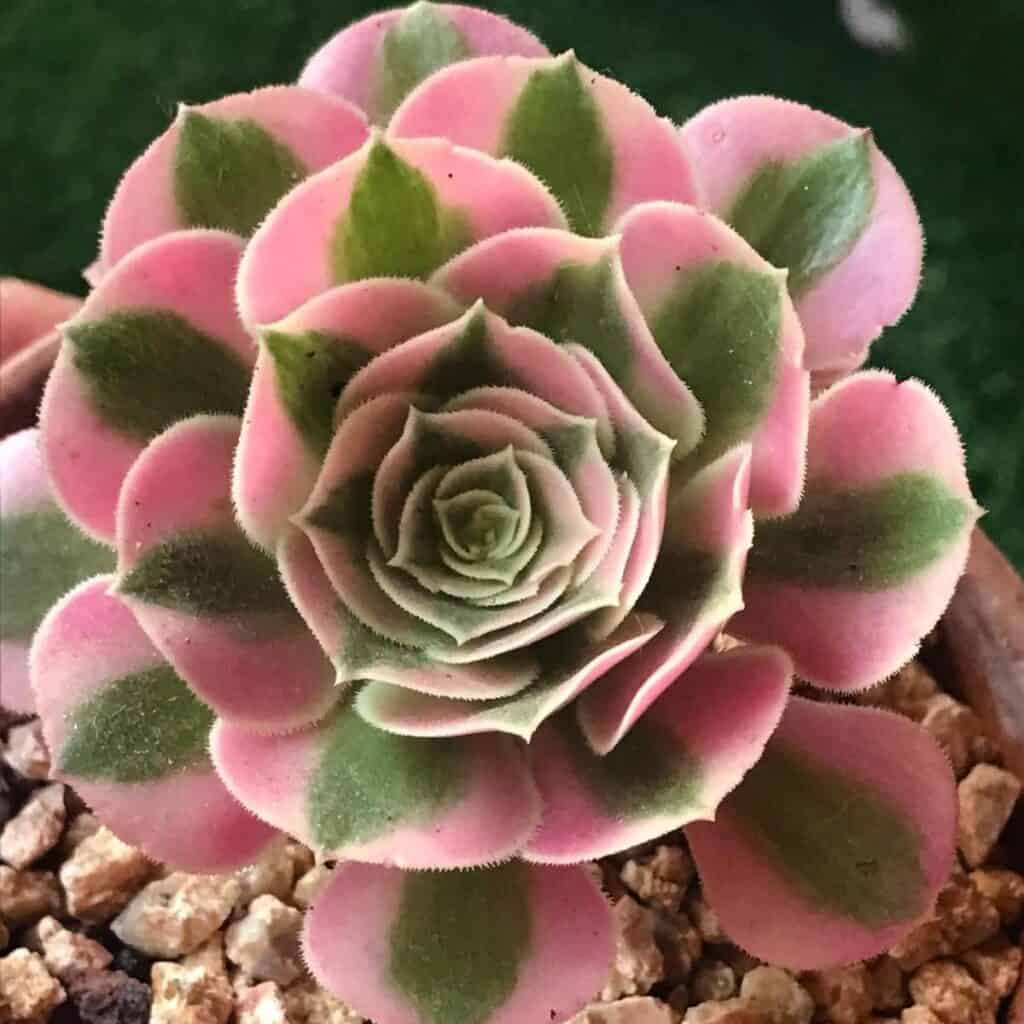

Aeoniums also grow in Morocco and East Africa. This shows how adaptable they are to different environments.
These plants can live in many types of habitats. They grow well in dry, arid areas. But they can also thrive in cloud forests with more moisture.
This habitat range shows how tough Aeoniums are. They can handle both very dry and somewhat wet conditions.
2) Monocarpic Nature of Aeoniums
Aeoniums have a unique life cycle, as they are monocarpic plants, which means they flower only once in their lifetime. Once they flower, the main plant dies, a natural part of their lifecycle designed to focus all their energy on seed production.
Not all Aeonium species flower at the same age. Some may take several years before they bloom. Others might flower sooner.
To prevent Aeoniums from dying after they flower, gardeners can propagate new plants using stem cuttings before the original plant dies. This method is a proactive way to continue the plant’s lineage.
The monocarpic nature of Aeoniums affects how they grow and spread. It’s why these plants often form clusters or colonies. New rosettes grow from the base, ensuring the species continues even after the main plant dies.
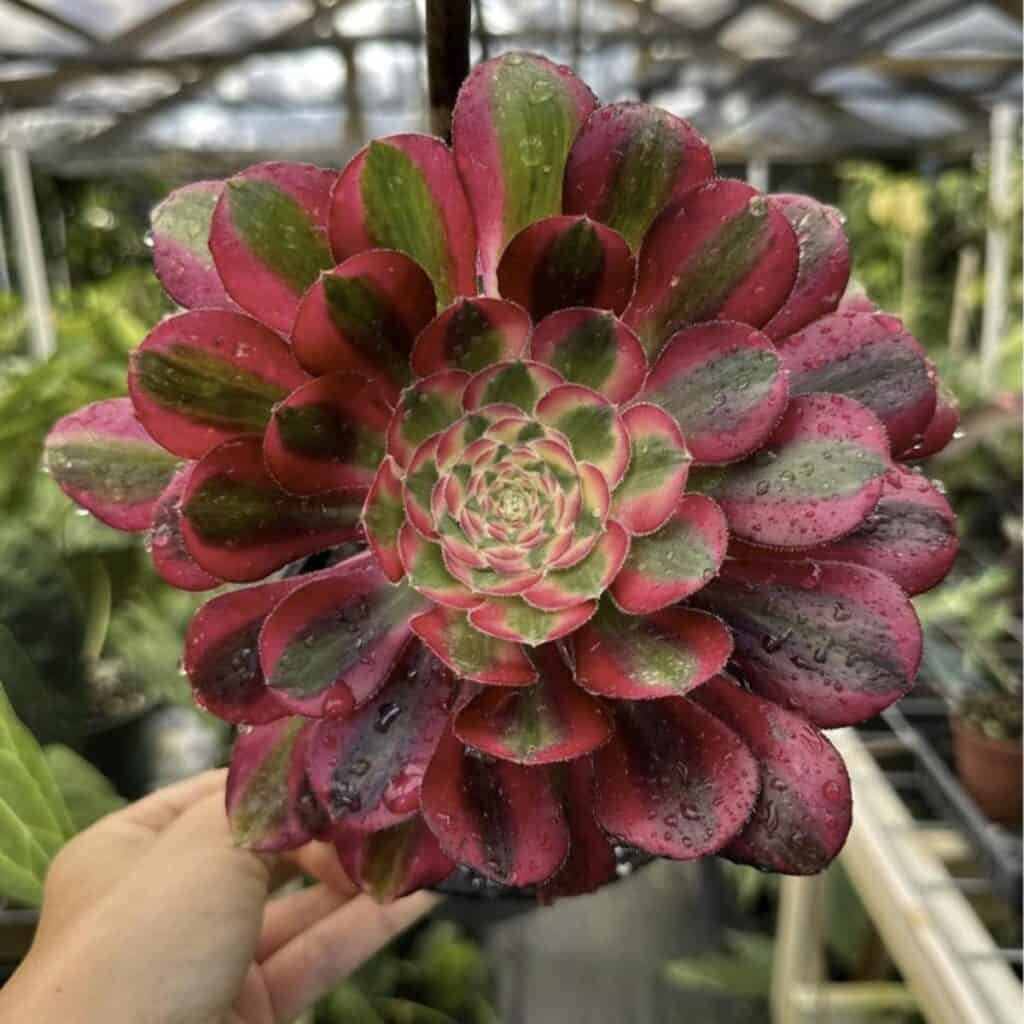

3) Unique Rosette Formation of Aeoniums
Aeoniums stand out among succulents for their distinctive rosette leaf formation. These plants feature waxy leaves arranged in spirals, creating symmetrical patterns that resemble flowers.
The rosettes of Aeoniums can vary greatly in size. Some species form small, compact clusters, while others grow into large, tree-like structures up to 3 feet tall.
This unique leaf arrangement serves both aesthetic and practical purposes. The rosette shape allows Aeoniums to efficiently collect sunlight and funnel water to their roots. It also helps the plants conserve moisture in dry climates.
Aeonium rosettes come in a range of colors, from deep green to rich burgundy. Some varieties, like Aeonium ‘Velour’, have velvety leaves that add visual interest to succulent collections.
4) Aeoniums Varied Growth Forms
Aeoniums come in a range of surprising shapes and sizes. Some grow as compact rosettes close to the ground, while others develop into tall, tree-like structures.
The Aeonium arboreum is a popular variety that can reach heights of up to 3 feet. It forms a branching structure with rosettes at the ends of its stems.
Another well-known type is the ‘Zwartkop’, also called Black Rose. This variety has dark purple, almost black leaves arranged in striking rosettes.
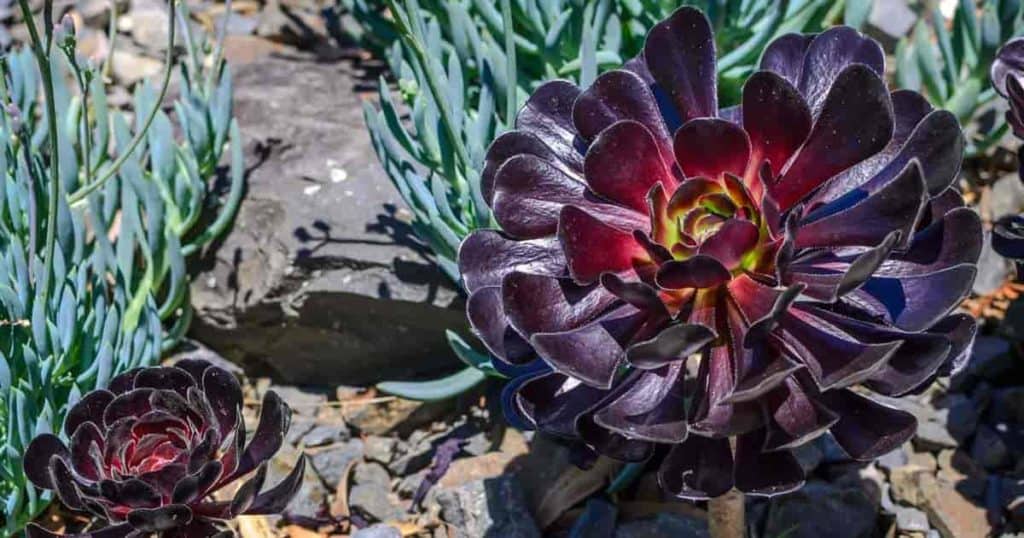

Some aeoniums stay small and clustered, perfect for rock gardens or small pots. Others spread out wide, creating ground cover in suitable climates.
The varied growth forms of aeoniums make them versatile plants for different garden styles and spaces. Their unique shapes add interest to any plant collection.
5) Seasonal Dormancy and Care Of Aeoniums
Aeoniums have a unique growth cycle that includes a dormancy period during summer. This affects how gardeners should care for these plants throughout the year.
In summer, Aeoniums enter a state of dormancy. During this time, their growth slows down significantly. They need less water and nutrients than usual.
Watering should be reduced during summer dormancy. It’s best to avoid fertilizing completely during this period. Overwatering can lead to root rot, so it’s crucial to let the soil dry out between waterings.
In winter, Aeoniums become active and start growing again. They need more water during this time, but it’s important not to overdo it. A well-draining soil mix is essential for Aeoniums to prevent water from sitting around their roots.
Fertilizing can be done in spring and fall when the plants are actively growing. This helps support their growth and maintain their vibrant colors.
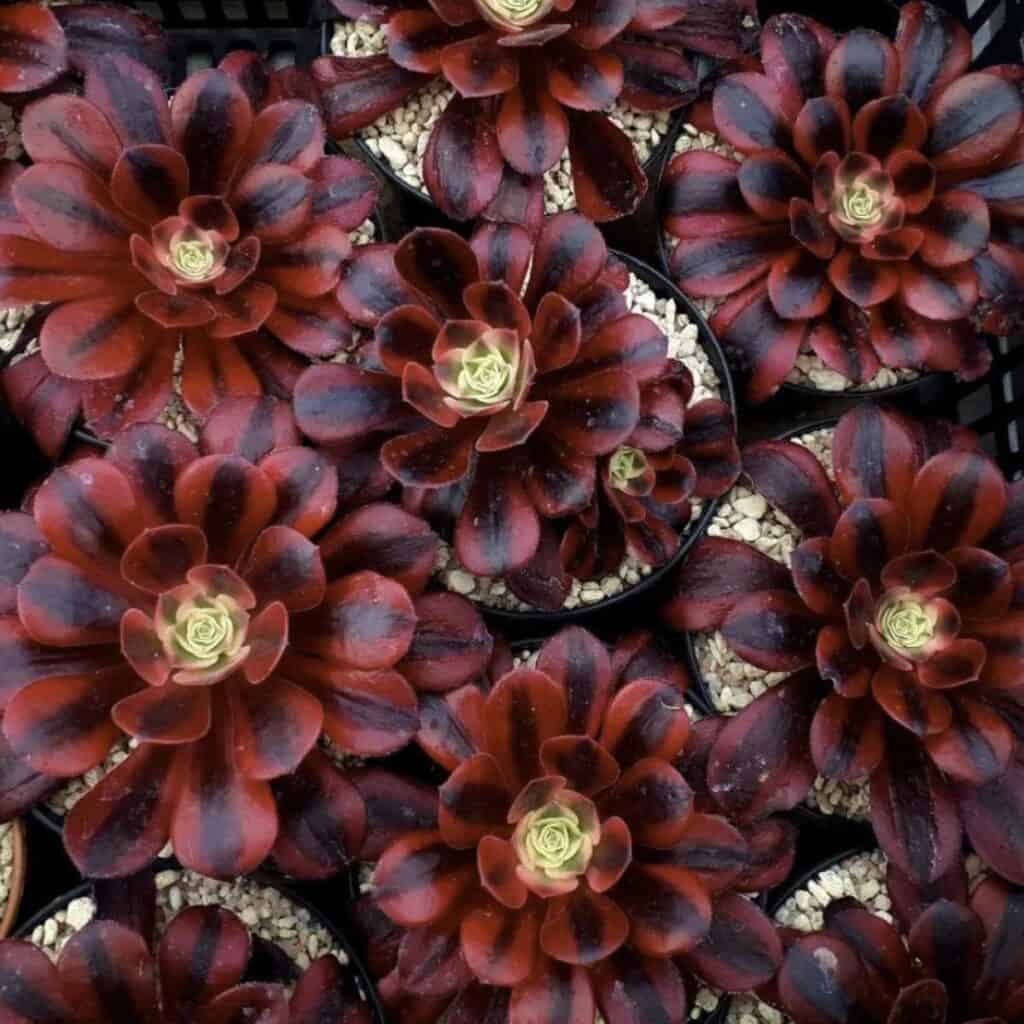

6) Threatened Habitats of Aeonium Plants
Aeonium plants face growing threats in their native habitats, such as the Canary Islands, Madeira, and parts of North Africa.
One major concern is habitat loss due to urban development and agriculture, reducing their natural growing areas and putting pressure on wild populations.
In addition, climate change is also posing risks to Aeonium plants as rising temperatures and changing rainfall patterns can disrupt their delicate ecosystems.
Aeoniums play an important role in local biodiversity by providing food and shelter for various insects and small animals. Their potential loss could have ripple effects throughout the ecosystem.
To protect these plants, conservation efforts are underway, including preserving natural habitats and creating protected areas. Some groups are also working on cultivating Aeoniums to reduce pressure on wild populations.
7) Aeonium Hybridization and Cultivars
Aeonium hybridization has led to many unique and beautiful cultivars. Plant breeders have been creating new varieties by crossing different Aeonium species for decades.
This process has resulted in plants with diverse colors, shapes, and growth habits. Some hybrids show improved drought tolerance or cold hardiness compared to their parent species.
One popular cultivar is Aeonium ‘Sunburst’, which features striking variegated leaves with yellow and green stripes. Its rosettes can grow up to 12 inches wide.
Another interesting hybrid is Aeonium ‘Zwartkop’, also known as ‘Black Rose’. This cultivar has deep purple, almost black leaves that form large rosettes on tall stems.
Aeonium ‘Kiwi’ is a smaller hybrid with green leaves edged in red. It forms tight rosettes and is perfect for container gardens.
These cultivars showcase the diversity that can be achieved through careful hybridization of Aeonium species.
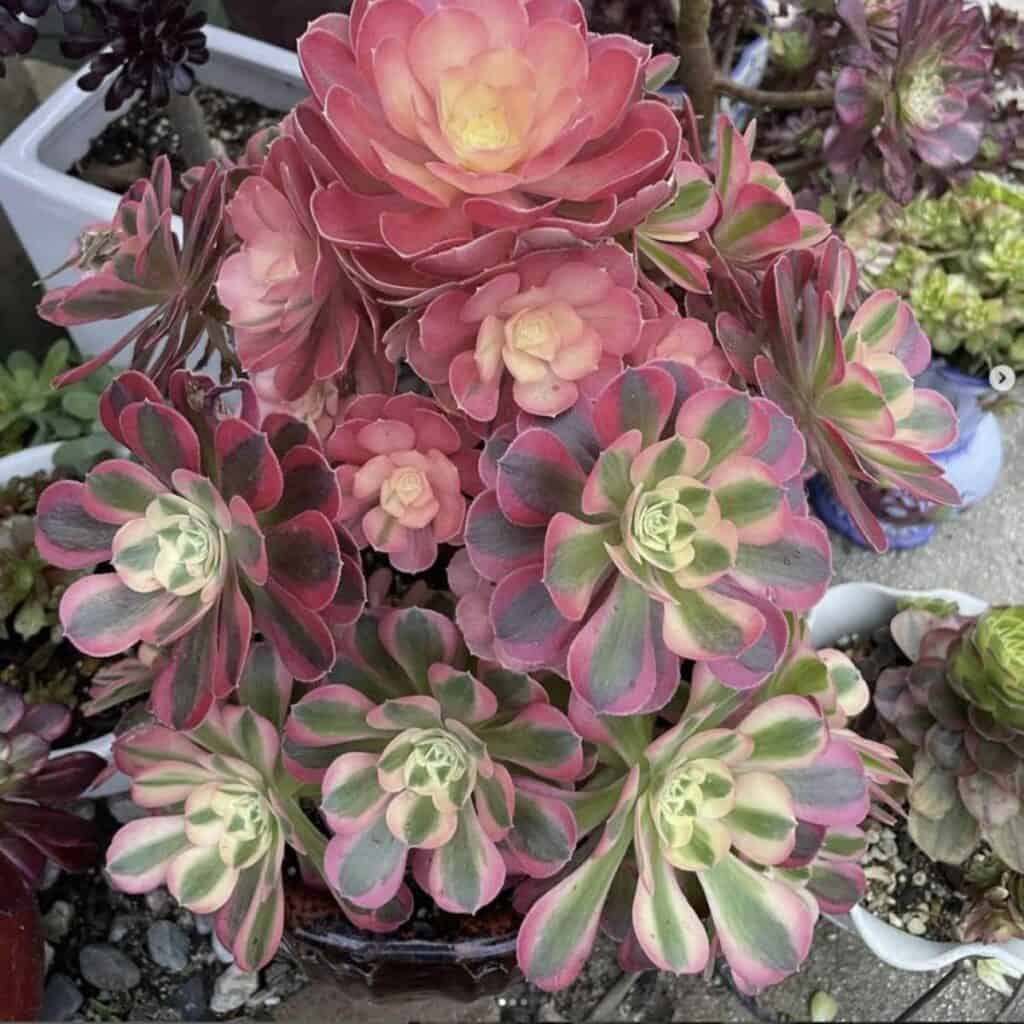

Origin and History
Aeonium plants have a fascinating background rooted in specific geographic regions. Their historical significance has shaped their development and popularity over time.
Geographical Roots
Aeonium plants are originally from the Canary Islands, Madeira, and Morocco, with the Canary Islands being the hotspot for these succulents’ diversity. Out of the 37 recognized species of Aeonium, 31 are found in the Canary Islands.
The unique climate and volcanic landscape of these regions have played a key role in shaping Aeonium adaptations. These plants thrive in subtropical environments with mild temperatures and low rainfall.
Some Aeonium species have also been discovered in East Africa, specifically in Ethiopia, Somalia, and Uganda. This wider distribution hints at the plant’s ability to adapt to various climates.
Historical Significance
Aeonium plants have long fascinated botanists and plant lovers alike. Originating from the ancient Greek word “aiōnios,” which translates to “ageless,” their name reflects the enduring interest they inspire.
These plants are pivotal in the botanical world, as researchers study them to gain insights into how species adapt and evolve in isolated settings.
The Canary Islands’ Aeoniums are a prime example of adaptive radiation—a process through which different growth forms and leaf shapes have emerged among Aeonium species, showcasing the remarkable adaptability and diversity of these plants.
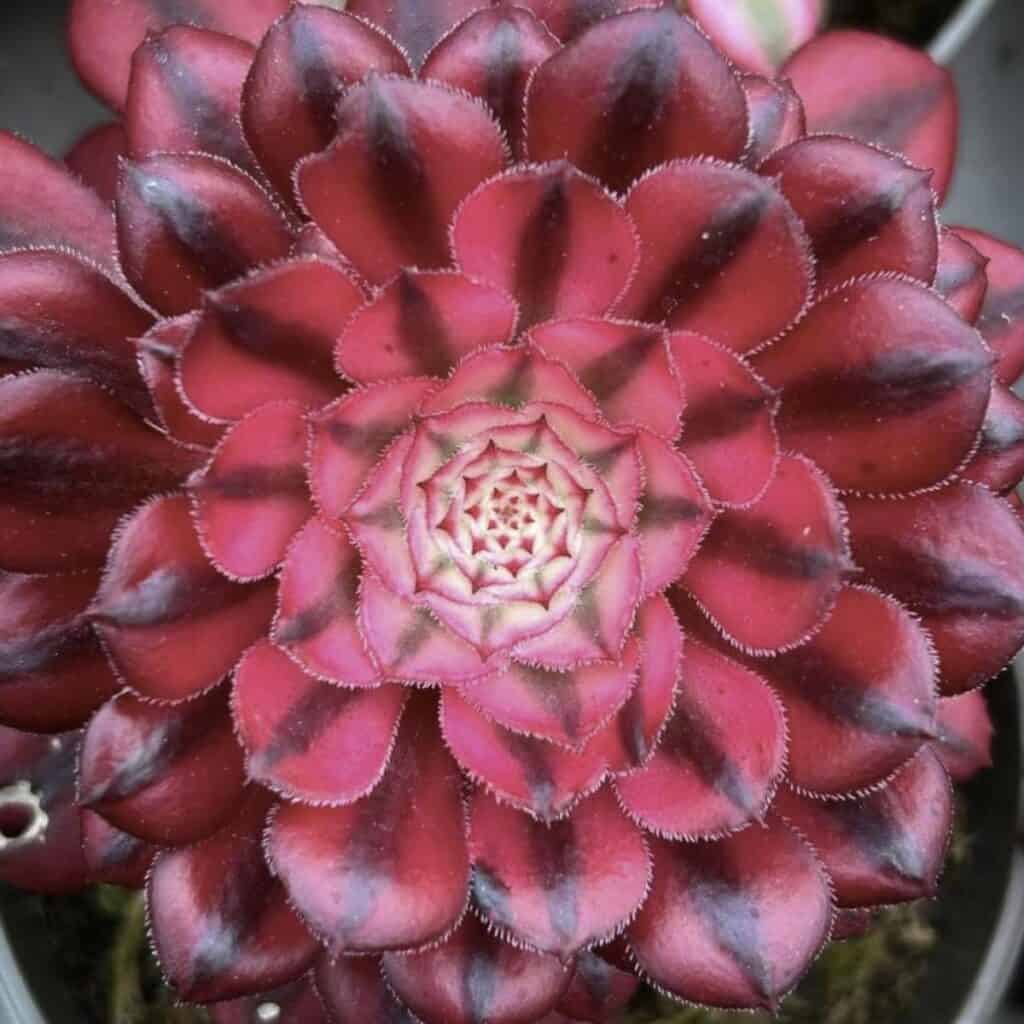

Unique Growing Conditions
Aeonium plants thrive in specific conditions that set them apart from many other succulents. Their preferences for soil and water are key to their health and growth.
Soil Requirements
Aeoniums need well-draining soil to avoid root rot. A sandy loam or regular potting mix with added perlite works best. This mix allows excess water to drain quickly while still retaining some moisture.
For container planting, use pots with drainage holes. This helps prevent water from pooling at the bottom. In gardens, make sure the soil isn’t too heavy or clay-like.
Aeoniums prefer slightly acidic to neutral pH levels. If your soil is alkaline, add some organic matter to lower the pH.
Watering Needs
Aeoniums have unique watering needs compared to many succulents. They like moist soil but can’t tolerate waterlogging. Water them when the top inch of soil feels dry to the touch.
In summer, water aeoniums about once a week. Reduce watering in winter when the plants are dormant. Always check the soil moisture before watering.
Aeoniums are more tolerant of underwatering than overwatering. If in doubt, it’s better to wait an extra day before watering.
Use room temperature water to avoid shocking the plant’s roots. Water at the base of the plant to keep the leaves dry and prevent rot.
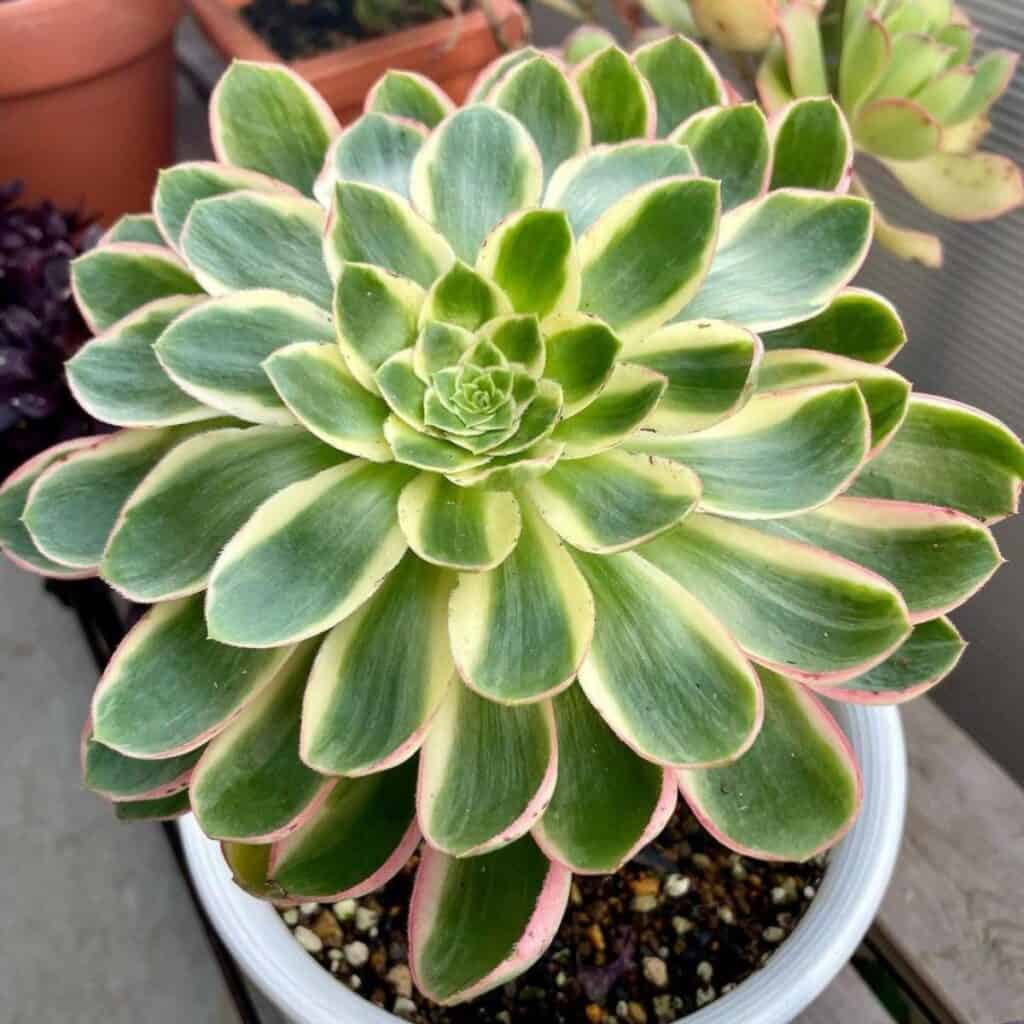

Physical Characteristics
Aeonium plants have distinct features that set them apart from other succulents. Their unique leaf structures and growth patterns make them eye-catching additions to gardens and homes.
Leaf Structure
Aeonium leaves grow in rosette formations, creating a flower-like appearance. These rosettes can range from 1 to 20 inches wide, depending on the species. The leaves are often spoon-shaped or triangular, with smooth edges or fine hairs.
Colors vary widely among Aeonium species. Some have vibrant green foliage, while others display shades of red, purple, or variegated patterns. The leaf tips may change color based on light exposure and stress levels.
Aeonium leaves are typically thick and fleshy, storing water to help the plant survive dry periods. This adaptation allows them to thrive in arid environments with minimal care.
Growth Patterns
Aeoniums exhibit diverse growth habits. Some are low-growing ground covers, while others grow into tall, tree-like forms. Some species remain small and compact, while others can reach heights of three feet or more.
Many Aeoniums grow on single or branching stems, with rosettes at the end of each branch. As the plant matures, it may develop a woody stem base. This growth pattern gives older plants a distinctive, sculptural appearance.
Unlike many succulents, Aeoniums are winter growers. They actively grow during cooler months and may go dormant in hot summer weather. This unique trait affects their care requirements and makes them well-suited for certain climates.
Frequently Asked Questions
Aeoniums have unique traits and care requirements that set them apart from other succulents. These plants adapt well to various conditions and can be propagated easily with the right techniques.
What unique adaptations do Aeoniums have compared to other succulents?
Aeoniums form distinctive rosettes with fleshy leaves. These rosettes can grow up to 16 inches in diameter for some varieties. Unlike many succulents, Aeoniums are winter growers and often go dormant in summer.
Their leaves are smoother and less waxy than other succulents. This adaptation helps them absorb moisture from fog in their native habitats.
Can Aeoniums survive in cold weather climates?
Aeoniums prefer mild climates and are not frost-hardy. They can tolerate short periods of cold but should be protected when temperatures drop below freezing.
In colder regions, it’s best to grow Aeoniums in containers. This allows them to be moved indoors during winter months.
What are the best practices for propagating Aeoniums?
Aeoniums are easy to propagate from stem cuttings. Cut a stem with a rosette and let it dry for a few days to form a callus.
Then, plant the cutting in well-draining soil and water sparingly. Keep it in a warm, sunny spot. Roots should develop within a few weeks.
How often should Aeoniums be watered during different seasons?
During their active growing season in winter and spring, water Aeoniums when the top inch of soil feels dry. This is usually about once a week.
In summer, when many Aeoniums are dormant, reduce watering significantly. Only water if the plant shows signs of dehydration.
What are the common pests that affect Aeoniums and how can they be treated?
Mealybugs and aphids are common pests for Aeoniums. These insects can be removed with a cotton swab dipped in rubbing alcohol.
For larger infestations, use an insecticidal soap or neem oil spray. Regularly inspect plants to catch pest problems early.
Closing
Aeonium plants offer unique surprises for gardeners and plant enthusiasts. Their diverse shapes, colors, and growth habits make them stand out among succulents.
These plants adapt well to different climates and require little maintenance. Aeoniums grow best in Mediterranean climates, thriving from winter to spring.
Some Aeonium species form tree-like structures, reaching up to 3 feet tall. The Aeonium arboreum, also known as “Tree Aeonium,” is a prime example of this impressive growth pattern.
Aeoniums pair well with other plants. Gardeners can create striking contrasts by planting them alongside silver-leaved varieties.
These succulents have unique watering needs. Unlike many other succulents, Aeoniums are winter growers and may go dormant in summer.
Proper soil is crucial for Aeonium health. A well-draining, gritty mix works best, preventing water retention and root rot.




